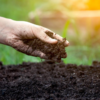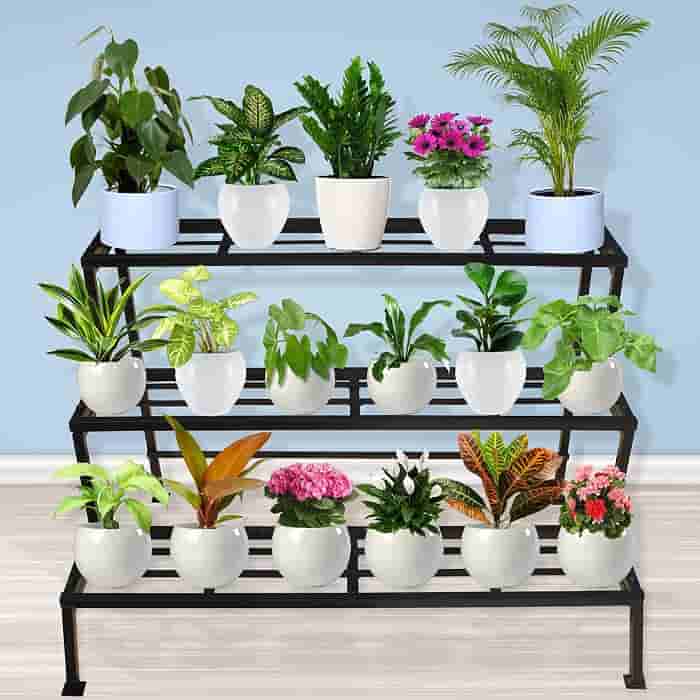Greetings, green thumbs, and plant enthusiasts! Today, we embark on a journey to demystify one of the most common and perplexing problems faced by plant lovers: leaf curl.
Whether you’re a seasoned gardener or just starting your botanical adventures, understanding the causes and finding effective cures for leaf curls can help ensure the vitality and beauty of your beloved plants.
Before diving in and unravelling this leafy mystery together, the first step should be knowing what are the different types of leaf curls and how to take action.
Leaf Curl Chronicles: Exploring the Diverse Types of Leaf Curls in Plants
As we venture into this botanical realm, we’ll uncover the fascinating array of leaf curl types that grace the plant kingdom. Get ready to unravel the mysteries behind these captivating twists and turns in foliage. So, let’s delve into the diverse types of leaf curls found in plants!
The Classic Curl: Upward and Inward
One of the most common types of leaf curl manifests as a classic curl, with the leaf edges turning upwards and inward, forming an elegant curve. Environmental factors such as temperature fluctuations, inadequate humidity, or water-related issues often cause this type of curl. Keep an eye out for this type of curl, as it can be indicative of stress or imbalances in your plant’s surroundings.
Twists and Spirals: Nature’s Dance
Imagine leaves gracefully twisting and spiralling, showcasing nature’s artistic flair. This mesmerising type of curl adds a touch of whimsy to your plants. Twists and spirals can be caused by genetic factors or certain physiological abnormalities. While it may be enchanting to behold, it’s essential to ensure that this type of curl is not accompanied by other signs of distress, such as discolouration or stunted growth.
Crinkled and Wavy: Nature’s Textures
Nature loves to experiment, and crinkled or wavy leaf curls are her artistic expression. These curls appear as irregular and uneven patterns across the leaf surface, creating visually striking textures. Crinkling and waviness can result from factors such as viral infections, nutrient deficiencies, or even certain pest infestations. Vigilance is crucial in identifying the underlying cause and taking appropriate measures to restore your plant’s health.
Cupping and Folding: Nature’s Embrace
In the botanical world, cupping and folding leaf curls bring a sense of intimacy and embrace. Leaves exhibit this type of curl inwards from the edges, creating a cup-like structure. Cupping and folding can be triggered by various factors, including hormonal imbalances, pests like aphids or mites, or even irregular watering practices. Identifying the root cause is vital to address this type of curl and restoring your plant’s vitality.
Downward Drooping: Nature’s Elegance
While most leaf curls tend to bend upwards, some plants exhibit the intriguing phenomenon of downward drooping. These curls gracefully hang downwards, creating an aura of elegance and sophistication. Downward drooping can be a natural growth pattern of certain plant species or can be influenced by factors such as insufficient light, overwatering, or root-related issues. Understanding your plant’s specific needs will help you determine whether this type of curl is part of its natural charm or a cry for help.
Taking Action: Nurturing Your Curled Leaves
Now that we’ve explored the diverse types of leaf curls, let’s discuss some general measures you can take to address and nurture your curly foliage:
- Identify the Cause: Investigate the environmental, physiological, or pest-related factors that may be triggering the leaf curl. This understanding will guide your efforts in finding the appropriate solutions.
- Optimal Care: Provide your plant with ideal growing conditions, including proper lighting, humidity levels, watering practices, and nutrient balance. Each plant species has unique requirements, so research and tailor your care accordingly.
- Pest Management: If pests are the culprits behind the curling leaves, employ organic or chemical pest control methods to eliminate them. Regular inspections and preventive measures can minimise the chances of infestations.
- Nutrient Boost: Address nutrient deficiencies by incorporating organic fertilisers or specific nutrient supplements. Balanced nutrition promotes healthy growth and reduces the likelihood of curling leaves.
- Pruning and Support: In cases where the curling leaves are beyond recovery, prune the affected foliage to redirect energy to healthier parts of the plant. Additionally, consider providing support, such as stakes or trellises, for plants with heavy or drooping foliage.
Leaf curls in plants are not just signs of distress or anomalies but rather a beautiful and intriguing symphony of nature’s designs. By understanding the different types of leaf curls and their underlying causes, you can become a proactive caretaker, ensuring your plants thrive and flourish.
Remember, observation, care, and a touch of botanical curiosity will guide you on this captivating journey through the world of curled leaves.
Now you know how to take action for your leaf curls. However, it is important to identify the reasons. Below are some common issues which cause leaf curl.
The Curious Case of Leaf Curl
Picture this: you’ve diligently nurtured a plant, providing it with optimal light, water, and care. But suddenly, the once-luscious leaves begin to curl and exhibit signs of distress. Leaf curl is a prevalent issue that can affect a wide variety of plants, including both indoor and outdoor species. The first step towards finding a solution is to identify the underlying causes.
Common Culprits:
Environmental Factors
- Temperature Fluctuations: Extreme temperature variations, such as cold drafts or scorching heat, can stress plants, leading to leaf curls.
- Humidity Levels: Insufficient or excessive humidity can disrupt the plant’s transpiration process, causing curling leaves.
- Light Intensity: Insufficient or excessive light can result in leaf curl, particularly for light-sensitive plants.
Watering Woes
- Overwatering: Excessive watering can lead to root rot and nutrient deficiencies, manifesting as curled leaves.
- Underwatering: Insufficient watering causes dehydration, leading to curled, wilted leaves.
Pests and Diseases
Aphids, spider mites, and other insects can infest plants, causing leaf curls as they feed on the leaves.
Check for pests living on and nibbling away at your plant. Sucking insects like aphids can cause leaves to distort and curl. You’ll usually find them on the undersides or tips of leaves.
Another pest, whiteflies, can cause upward plant leaves curling. They are almost translucent and can be difficult to spot. They attach themselves to the underside of leaves, sucking out moisture.
Fungal or viral infections can also contribute to leaf curl, with symptoms varying based on the specific pathogen involved.
Nutritional Imbalances
Lack of essential nutrients, such as nitrogen, potassium, or magnesium, can disrupt the plant’s growth and result in leaf curl.
Now that we have a clearer understanding of the potential causes, it’s time to explore effective remedies for leaf curl treatment.
Rescuing Your Plants: Effective Cures
Adjusting Environmental Conditions
- Ensure consistent temperature and protect plants from extreme fluctuations.
- Monitor and maintain appropriate humidity levels for your specific plant species.
- Place light-sensitive plants in locations that provide the right amount of light for their needs.
Watering Wisely
- Determine the specific watering requirements of your plants and create a consistent watering schedule.
- Allowing the soil to somewhat dry out in between waterings will help you avoid overwatering.
- When watering, ensure thorough but gentle saturation of the root zone.
Pest and Disease Management
- Check your plants frequently for evidence of illnesses or pests. If detected, treat them promptly with appropriate organic or chemical solutions.
- Maintain good plant hygiene by removing dead leaves or debris, minimising the chances of pest or leaf curl disease
Nutrient Balancing
- Use a balanced fertiliser to provide essential nutrients to your plants, catering to their specific requirements.
- Consider conducting a soil test to identify any deficiencies and supplement accordingly.
Prevention is Key!
Remember, prevention is often easier than finding a cure. Incorporating these practices into your routine gardening habits can help prevent leaf curl and maintain the overall health of your plants:
- Research and choose plants that are well-suited to your local climate and environmental conditions.
- Ensure proper spacing between plants to promote adequate air circulation.
- Regularly inspect plants for signs of stress, pests, or diseases, and take prompt action.
- Practise proper watering techniques, adjusting as needed based on the season and plant requirements.
- Maintain a clean gardening environment, free from debris or stagnant water.
Conclusion
Leaf curl can be a distressing problem for any plant enthusiast, but armed with knowledge and a proactive approach, you can overcome it with ease. By understanding the causes, implementing effective cures, and focusing on preventive measures, you can keep your plants thriving and flourishing, showcasing their vibrant foliage for all to admire.
So, fear not when confronted with those pesky curling leaves. Instead, embrace the challenge and let your green thumb guide you toward a healthy and thriving garden!
Happy gardening!










Recent Comments